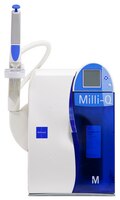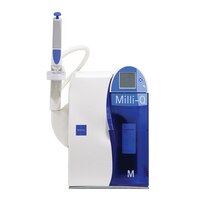The importance of ultrapure water for nano LC-MS applications
M. Tarun, S. Mabic, D. Budac, M. Hayward
The Column (2011) 9 May, Issue 8, 12-17
2010
Afficher le résumé
Nano-flow LC (nano-LC) has emerged as an important tool in proteomics research as well as quantitative measurement of low level biomarkers. A common problem facing users of this technique is emitter clogging. To avoid this, it is important not only to use robust nanobore columns and emitters, but also to make sure that the solvents and reagents are of the highest purity. This work presents a proof of concept that using freshly produced ultrapure water to prepare nano-LC eluent does not cause emitter clogging. This is demonstrated by comparing the mass chromatograms of peptides over numerous injections using the same emitter and using fresh ultrapure water in the eluent, as well as by physical examination of the used emitter under a light microscope. Article en texte intégral |
A challenging organic contaminant in high purity water: the endocrine disrupters
S. Mabic, I Naoe, I. Kano
Ultrapure Water
27-31
2004
Afficher le résumé
Endocrine disrupters are substances or mixtures that alter functions of the endocrine system and consequently cause adverse health effects in an intact organism or its progeny. They have structures that resemble the natural hormone, and interfere with natural hormones by binding to the hormonal receptor. For example, bisphenol A, nonylphenoll and stylbazol all have a common sub-structure close to oestradiol, and they all interact with the estrogen receptor.Developing analytical methods sensitive enough to identify and quantify the presence of endocrine disrupters at low levels in drinking water and environmental monitoring requires high purity water free of endocrine disrupters. The combination of technologies normally embedded in water purification systems bring concentrations of endocrine disrupters to a low level, and in cases where Endocrine Disrupter-free water is required, traces can be removed with a specific polisher at the point of use of the purification system. |










